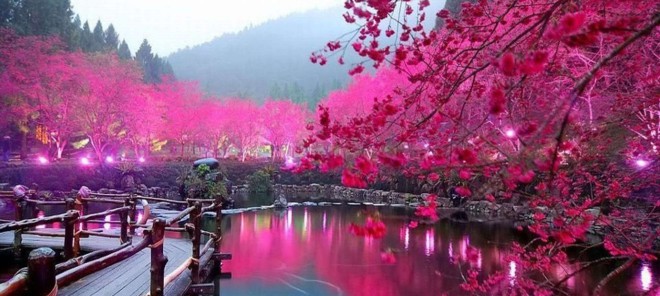Japan is situated in north-eastern Asia between the North Pacific and the Sea of Japan. The area of Japan is 377,873 square kilometres, nearly equivalent to Germany and Switzerland combined or slightly smaller than California. Japan consists of four major islands, surrounded by more than 4,000 smaller islands.
There is only one official language spoken in Japan, which is of course Japanese. However, many Japanese are able to understand English to a certain extent since English is the foreign language that everyone must learn as part of compulsory education.
Even if you don’t understand Japanese, you can still certainly enjoy Japan. But if you know a few everyday Japanese phrases then it will make your trip even more memorable. A few words make a big difference.
Japan’s population is over 127 million. Most Japanese reside in densely populated urban areas. Japan’s capital city is Tokyo. The population of the Tokyo Metropolitan Area including the city, some of its suburbs and the surrounding area is approximately 13 million.
All of Japan is in the same time zone, 9 hours ahead of G.M.T. No Daylight Saving Time is practiced in Japan.
Here are some of Japan’s World Heritage Sites:
HIRAIZUMI – IWATE
Hiraizumi in the southwestern part of Iwate Prefecture is a town extending up the Hiraizumi Hill on the west bank of the Kitakami-gawa River, that prospered for almost 100 years from the 11th to 12th centuries as the center of the Tohoku region (the northeastern region). Over 3,000 national treasures and historical sites still remain, telling of the Fujiwara Clan that reigned over the area in the zenith of its prosperity.
OGASAWARA ISLANDS – TOKYO
The Ogasawara Islands is the general term for 30 islands of various size scattered over the Pacific Ocean. Located to the south of the Izu Islands, they are made up of three groups of islands. The whole area forms a part of Ogasawara National Park.
SHIRAKAMI-SANCHI MOUNTAIN RANGE – AOMORI & AKITA
A range of mountains reaching an altitude of around 1000m extends east and west over an area of 130,000 ha that straddles the prefectures of Aomori and Akita. This is one of the last natural beech forests left in East Asia. One of the main features of the Shirakami-sanchi area is the rough mountainous landscape cut through with deep gorges by its numerous rivers. It is also home to some of the most unique plants in the world, as well as rare animals including a protected species of dormouse, the black woodpecker, Japanese serow and golden eagle.
SHRINES & TEMPLES OF NIKKO – TOCHIGI
The “Shrines and Temples of Nikko” refer to the Toshogu and Futarasan-jinja shrines and the Rinnoji temple as well as their surroundings.
SHIRETOKO NATIONAL PARK – HOKKAIDO
Shiretoko, a natural heritage site registered only in July 2005, is considered to be the last pristine wilderness remaining in Japan. Shiretoko is a long narrow peninsula located in north-eastern Hokkaido.
HIMEJI CASTLE – HYOGO
Himeji Castle is a classic example of Japan’s beautiful castle architecture. The castle’s pure white appearance with white plaster coating is said to look like a dancing Shirasagi (Egret) with wings spread, earning it the nickname “Shirasagi-jo”. It was spared from damage during the war and from many other disasters and is in a remarkably preserved state compared to other castles. Seventy-four structures within the castle site including a tower and gate are designated as important cultural assets of Japan.
HIROSHIMA PEACE MEMORIAL & ITSUKUSHIMA SHRINE – HIROSHIMA
The Genbaku Dome is the ruin of the former Hiroshima Prefectural Industrial Promotion Hall that was destroyed when the first nuclear weapon/atomic bomb in human history was dropped by an American air force bomber on 6th August 1945. Because the atomic blast was almost directly above this spot, the walls of the building were partially spared from destruction, and the characteristic form of the building remained with the iron frame of the dome. This building representing Hiroshima, the first city to fall victim to nuclear bombing is registered as a World Heritage site as a symbol of prayer for permanent world peace and the elimination of all nuclear weapons.
